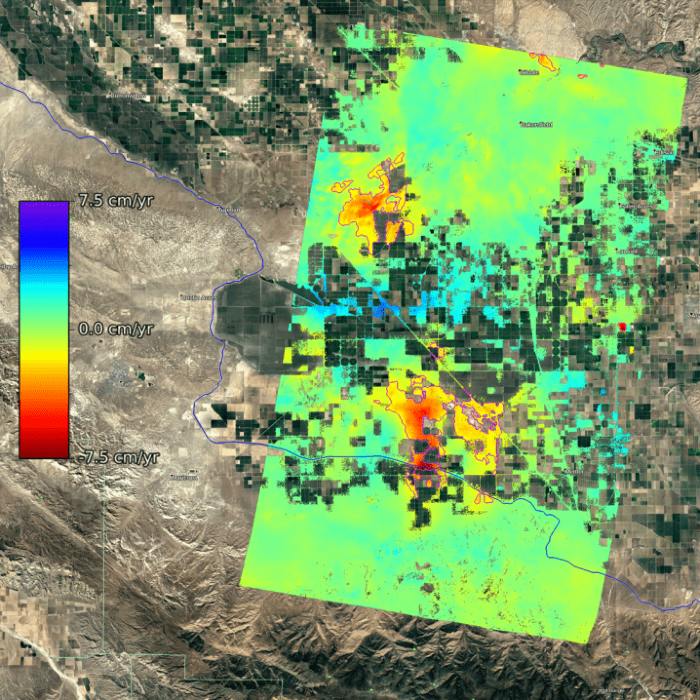
Computing scientists at UAlberta are using machine learning to assist in disaster prediction. Here, an image tracks changes in geological displacement rates near an aqueduct. Image credit: Irene Cheng
Computing scientists at the University of Alberta are using machine learning to predict natural and man-made disasters around the world through a partnership with Vancouver-based company 3vGeomatics (3vG).
The scientists are using machine learning to examine satellite images of Earth’s surface, in order to detect any changes that could indicate the onset of a natural disaster, such as a landslide or earthquake. The cause of such disasters can range from human activity, such as mining or resource extraction, to extreme weather, to the shifting of Earth’s tectonic plates.
“Early prediction of ground displacements can aid in preparation before disasters happen and thus save lives,” said Irene Cheng, adjunct professor in the Department of Computing Science and research lead on the project. “The economic and technological impacts not only benefit Canada, but also the global community, and will strengthen Canada’s leadership in the monitoring of geological activities.”
This research builds on two years of previous research for developing the machine learning algorithms, conducted in partnership with 3vG. A funding infusion from the Natural Sciences and Engineering Research Council of Canada (NSERC) of $500,000 will launch Phase II of the project, which will focus on turning research ideas into applied applications to benefit society.
“Space agencies all over the world are actively collecting satellite data for researchers to predict potential disasters in various target regions,” explained Cheng, who is also the director of the multimedia masters program in the University of Alberta’s Department of Computing Science. “Our next three-year research plan aims to preserve high accuracy using fewer and fewer satellite images. Eventually, we’ll go from requiring 12 months of images to just one month.”
The research team led by Cheng is comprised of PhD students Subhanyan Mukherjee and Alvin Sun and master's students Arjun Umashankar and Harini Hariharakrishnan, as well as students in the multimedia masters program.
This project builds on the research conducted from 2017 to 2019 led by Cheng. Phase I of the Wide Area Monitoring System (WAMS) Project was funded by Consortium of Aerospace Research in Canada (CARIC) and Mitacs. With the first completed project under their belt, the UAlberta research team continues to work with 3vG, with support from NSERC, over the next three years to scale up the findings to other challenges facing the industry.
Want to find out more about the artificial intelligence and machine learning research going on at the University of Alberta? Check out the Faculty of Science artificial intelligence hub to learn more.